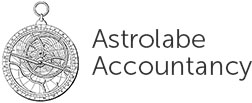Budget 2016: What’s New for Small Businesses
 The Definition of Small Business Entity
The Definition of Small Business Entity
The biggest change here is in the definition of “small business” for the purpose of tax concessions. From 1 July 2016 a “Small Business Entity” (SBE) will be defined as a business with a group turnover under $10 million – up from $2 million. If your business now meets this definition you will qualify for the following concessions available to SBEs:
- Simplified depreciation rules including the immediate write-off for assets under $20,000 (available until 30 June 2017, after which the write-off limit reverts to $1,000). More expensive assets are pooled and the balance depreciated at 30% per year. These assets are depreciated at 15% in the year of purchase even if purchased just before the end of the financial year.
- Pay company tax at the discounted rate of 28.5% instead of 30%. Unincorporated businesses (sole traders, partnerships and trusts) receive a tax discount of 5%. These measures have been improved from 1 July 2016 – see below.
- Simplified trading stock rules that remove the need to count and value stock at financial year-end if the estimated value of closing stock is within $5,000 of the opening stock value. (This concession has limited application to larger small businesses as they would have larger fluctuations in stock value.)
- Claim an immediate deduction for prepaid expenses where the payment covers a period of 12 months or less that ends in the following tax year.
- Have a two-year amendment period in most cases instead of four years. This is a two-edged sword: it protects you from the ATO reviewing your tax liability after two years from the date of assessment, but it also means that there is a shorter time in which you can apply for an amended assessment in your own favour. (And there is no time limit for the ATO if there has been deliberate fraud!)
- Account for GST on a cash basis, so debtors and creditors are excluded from GST calculations.
- Have the option of paying GST in quarterly amounts calculated by the ATO. This means that you can calculate actual GST once a year instead of every quarter.
- Access simplified BAS statements from 1 July 2017. This is a new announcement – see below for more details.
Note that the changed definition will not apply to the Capital Gains Tax concessions for small businesses. To qualify for the 50% active asset reduction, the 15-year exemption, the retirement exemption or the small business rollover, a business will continue to need to have group turnover under $2 million or net group assets under $6 million.
Reduction in company tax rates
The company tax rate for small business companies is 28.5% in the 2015-16 year. The Budget plan is for this rate to be extended to more companies and reduced over time until all companies pay tax at 25% in the 2026-27 year.
From 1 July 2016 the company tax rate will reduce to 27.5% and will apply to companies with a group turnover under $10 million. The turnover threshold will increase over the next seven years until in 2023-24 it will apply to all companies. Then over the next three the rate will reduce to 27%, 26% and finally 25% for all companies.
The downside is that franking credits on dividends can only be distributed in line with the rate of tax paid by the company. This means distributed profits will be taxed at a higher rate in the hands of the shareholders.
Unincorporated small business tax discount
This is a consolation prize for small businesses that are not companies, as their profits are not taxed at a fixed rate but are taxed in the hands of their owners at their progressive tax rates. Profits from small businesses with group turnover under $2 million are subject to a 5% discount in the 2015-16 year, up to a maximum saving of $1,000 per individual owner.
From 1 July 2016 the discount rate will increase to 8% and will apply to profits from businesses with group turnover under $5 million (not the new SBE threshold of $10 million). From 2024-25 to 2026-27 the discount rate will increase to 10%, 13% then 16%. Unfortunately the discount will remain with a maximum tax saving of $1,000 per individual.
Change in personal tax rates
From 1 July 2016 the threshold at which the 32.5% tax rate changes to 37% will increase from $80,000 to $87,000. This change will save $315 in tax for persons with taxable income of $87,000 or more. This change applies to all taxpayers – not just small businesses.
Simplified BAS statements
From 1 July 2017 the Business Activity Statement (GST return) will be simplified for small business entities, with the number of reporting labels reduced from seven to three. The changes will be trialled during the 2016-17 year.
The Uncertainty
It is important to note that the Labor Party and the Greens have said that they will not support extending the definition of a small business entity nor will they agree to the tax cuts, so a lot depends on the results of the upcoming federal election on 2 July 2016. The changes depend on the Coalition retaining power and being able to get the legislation through both houses of parliament.
